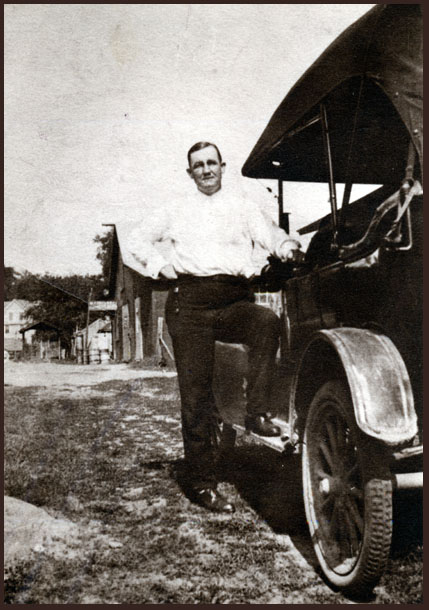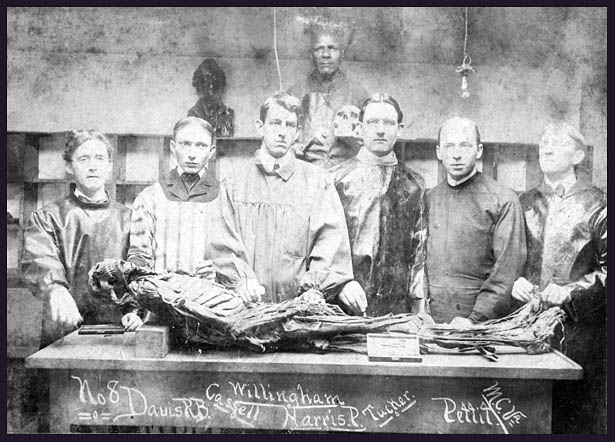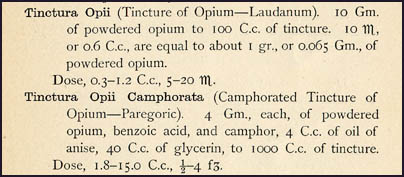

  |
|

|
Name: Dr. Percy Harris, Sr. Date: 1915 Image Number: RM11ccdRM02 Comments: Shown in this 1915 photo, Dr. Percy Harris, Sr. stands beside his Maxwell car on West Main Street with Valley Street behind him. The building just behind his right elbow is W.F. Paulett Lumber and at the photo's left is a three-storied, white building called the Travelers' Rest Hotel. Percy enrolled in the Medical College of Virginia (MCV) in Richmond, Virginia, by 1900.
Before the days of clinical instruction in hospitals, medical students graduated with little more
than theoretical knowledge of anatomy. By 1900, however, MCV provided ample facilities
for the pursuit of practical anatomy, and by shortening the daily task of didactic instruction,
the school provided sufficient time for 'objective-teaching' in the dissecting room. The
lectures on physiology were fully illustrated by experiment to ensure that a surgeon developed
a good knowledge of the human body on which they would operate. Medical students obtained such
practical experience in the MCV dissection rooms. In the 1901 photo below, Percy Harris is shown (fourth
student from the left) with his anatomy classmates at MCV as they dissected a cadaver in a laboratory:  At the start of the twentieth century, many people still died from infectious diseases; consequently, in 1900, the average life-span of a white male in the United States was only 47 years. Medical scientists looked for ways to kill bacteria that caused incisions and wounds to become infected. If the wounds turned septic, a life-threatening condition could develop if the infection spread to the patient's blood. Leading medical figures of the day debated whether surgery should be accomplished with gloves to lower the risk of increased infection for their patients. Some doctors felt wearing gloves involved a loss of delicate sense of touch and of skill in fine surgical manipulations. Instead, they sanitized their hands via complex rituals of scrubbing hands with soap and water, followed by soaking them in sterilized water or saline and drying with sterile towels. Some doctors even believed that dissection and subsequent surgery with bare hands were completely safe, provided the cadavers had been properly injected with disinfectant solutions. Although it's not known if the cadaver above in the 1901 anatomy class included disinfectant solution, all of the students are shown dissecting with their bare hands and without gloves. When Percy graduated from MCV in 1905, he practiced initially in Grafton, Virginia, but moved his practice and family to Norwood, Virginia, in 1906. There he supplemented his income by serving as a doctor for the Piedmont Quarry and for the Chesapeake and Ohio Railroad. As a railroad doctor, Percy treated sick and injured employees and, on more than one occasion, traveled to the injury site via railroad handcar. He once told about setting a man's leg at the scene of an accident with a board off a nearby fence.
Dr. Harris was influenced in the early 1900's by the ideas of William Oster, a medical innovator who believed that the functions of a physician were to identify disease and its manifestations, to understand its mechanisms and how the disease may be prevented and cured. He believed that the best medical textbook for his students was the patient itself. Like Oster, Dr. Harris's strategy was to characterize and analyze a patient's symptoms. He was his own medical technologist, collecting sample cultures from his sick patients and analyzing those samples with the use of several microscopes that he owned. Once his diagnosis was made, Dr. Harris produced a treatment strategy which included researching an effective medicine for the illness in his own medical library and preparing an appropriate dosage for his patient. To Dr. Harris, medicine was about problem-based solutions for his beloved patients. Below dosages for paregoric and laudanum are from Dr. Harris's copy of Dosebook and Manual of Prescription-Writing by E.Q. Thornton, M.D. (Philadelphia, London: W. B. Saunders and Co., 1901). Paregoric and laudanum were often prescribed by physicians in the twentieth century for such common ailments as diarrhea and severe coughing. In 2005, however, these medicines have been replaced by less addictive remedies:  Dr. Harris was a large man with a gentle, comforting way about him that was much loved by his patients. He would rather practice medicine than anything other than perhaps ride a horse, which he did most Sundays until late in his life. As can be seen in the following statements by several of his former patients, Dr. Harris made a difference in their lives: John Randolph Phillips: "Dr. Percy Harris was a happy giant, who also served as Mayor of Scottsville and whose very presence in a sick room started the ball of recovery to rolling." Margaret Bradley Forsyth: "Dr. Harris was a great big man and just the sweetest thing. When my daughter was a baby, she had a terrible colic. And I remember he came out to our house, and I have a vivid memory of him picking up my baby, putting her on his shoulder, and patting her gently on the back. He was calming her down and calming me down, too!" Richard Ludlum Nicholas: "Dr. Percy Harris was a wonderful fellow. He looked like a doctor and acted like a doctor. He was a perfect role model for us all. You would go into his office and feel like you were going to die in the next minute. Dr. Harris made house calls and would come out into the country to see you if you were sick. And he brought me into the world -- he was my doctor!" Haden Anderson: "Dr. Harris was a person, who made a contribution to the town. He made house calls and was good at his work. He was very likable and well-respected in the community -- he was my doctor." Dr. Harris continued working as a C&O doctor until 1950 and kept up with a busy office practice
until the day he died on February 4, 1955. He had just seen a patient, gone into
his living room, and collapsed unexpectedly at his home. One of his patients, G.E. Cullen of Howardsville,
Virginia, wrote the poem below in memory of Dr. Harris:
Dr. Harris also served as Mayor of Scottsville from 1943-1953 and was a charter member of the Scottsville Lions Club and a member of Masonic Lodge 45. He was married to Innes (Randolph) Harris and the father of four children: Innes Roberta; Mary Peyton; Percy, Jr.; and Susan Randolph Harris. Dr. Percy Harris, Prominent Local Physician, Succumbs
The Scottsville Sun, 10 February 1955 Dr. Percy Harris, 73, of Scottsville, for fifty years a practicing physician in Virginia and for the entire time a member of the Medical Society of Virginia, died unexpectedly Friday, 4 February 1955, about 7 o'clock pm at his home. One of the leaders in policymaking and in the extension of the Virginia Society, Dr. Harris recently received a commendatory award recognizing his half-century of service in his . He had not been well for several years, but was not confined to his bed and his condition was not considered critical. His wife, the former Miss Innes Randolph, daughter of the late Mr. and Mrs. Peyton Randolph of Amherst, to whom he was married in September 1904, survives him together with three daughters, Mrs. John Moulton of Scottsville, Mrs. Harris Haynes and Mrs. Mary Peyton Harris Boan, both of Richmond, and one son, Percy Harris, Jr., of Camden, S.C. Surviving also are two grandsons, Randolph Moulton of Scottsville and Percy Harris II of Camden and one granddaughter, Peyton Harris of Scottsville. Native of Nelson County
Dr. Harris was the son of Frederick Joseph and Roberta Drummond Harris, and was born March 18, 1880, in Nelson County, at their home in the upper James River section. Three sisters, Mrs. A. A. Miller, Mrs. William Ingles, and Mrs. Bradley Bynum, all of Radford, survive. Dr. Harris was educated at Brown School in Nelson County and at Kenmore School at Amherst. He received his medical degree from the Medical College of Virginia in 1905. He was widely related in Albemarle, Nelson, and Amherst counties. In Scottsville, he had been identified with county affairs and was also owner of several large farms. He was a member of the Presbyterian Church. He served several terms as mayor of Scottsville, was a charter member of the Scottsville Lions Club, and a member of Masonic Lodge 45, AF & M. He was a member of Phi Chi medical fraternity. Graveside services were held Sunday (6 February 1955) at 2 pm at Scottsville Presbyterian Church. The photo of the 1901 MCV Anatomy class is part of the Percy Harris, III, collection. Percy resides in Aurora, CO, and is the grandson of Percy and Innes (Randolph) Harris, Sr. The remaining photos are part of the Randolph Moulton collection. Randolph resides in Macon, Georgia, and is the son of John Adkins Moulton and Innes Roberta (Harris) Moulton. He is the grandson of Dr. Percy Harris, Sr. Copyright © 2018 by Scottsville Museum |
|
|
|
Museum
Archive
Business
Cemeteries
Church
Events
Floods
For Kids
Homes
Portraits
Postcards
School
Transportation
Civil War WWII Esmont Search Policy |
||||
|
Scottsville Museum · 290 Main Street · Scottsville, Virginia 24590 · 434-286-2247 www.avenue.org/smuseum · info@scottsvillemuseum.com Copyright © 2018 by Scottsville Museum |
||||